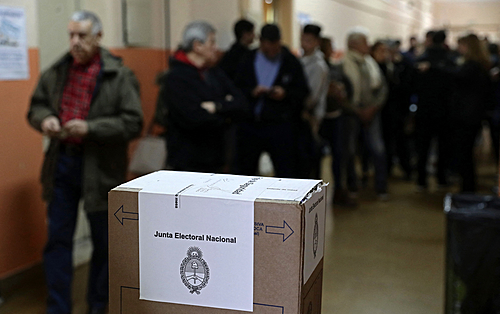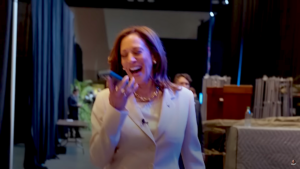
The latest data on the monthly variation of inflation in Argentina show an increase in prices of 8.4% in April compared to March. The context is adverse in an election year for the governing coalition, the Peronist Frente de Todos (FdT). Sergio Massa, third Minister of Economy in Alberto Fernández’s government, has sought an unlikely balance between containing social degradation and meeting the requirements of the International Monetary Fund with the country in debt.
However, the provincial elections reveal another scenario for Peronism. The political group has won reelection in all provinces (the equivalent of states, in Brazil) in which it governs.
The performance of Peronism in the provincial elections
The local elections began in February, inaugurating this year’s electoral calendar. The elections choose the new governors of their provinces, in addition to other positions such as mayors, councilors, deputies and senators. Of the 24 jurisdictions, 21 renew governors, and, so far, nine have had elections.
The most recent were last Sunday (14), in three provinces that renewed Peronist mandates. They were Salta, with the re-election of Gustavo Sáenz, with 47% of the votes; Tierra del Fuego, with the re-election of Gustavo Melella (52%); and La Pampa, with the re-election of Sergio Ziliotto (47%).
Two other provinces, Tucumán and San Juan, would also have elections this Sunday, but had the election suspended by a precautionary measure issued by the Supreme Court of Justice. In both, Peronism was also a favorite.
In early May, Jujuy, La Rioja and Misiones went to the polls. Peronism was re-elected in La Rioja: Ricardo Quintela received 50.6% of the votes. In Misiones, the local force Frente Renovadora da Concórdia, an ally of the FdT, had an overwhelming victory: Hugo Passalacqua was elected with 64% of the votes.
:: Argentine court suspends elections in provinces where Peronism was favorite; Fernandez reacts ::
Alongside local parties, Argentina’s main political forces at the national level also performed better in the provinces: Peronism and the Macrista right wing represented by the Juntos por el Cambio (JxC) coalition. The latter only won in Jujuy, the province it already governed: Carlos Sadir won with 49% of the votes, and the FdT came in second, with 22%.
In Neuquén and Río Negro, local forces predominated. In Río Negro, the right-wing coalition Juntos Somos Río Negro won with Alberto Weretilneck, who received 41% of the votes – something that Juntos por el Cambio nacional, in an unfavorable scenario, incorporated as its own victory. And, in Neuquén, Rolando Figueroa won (35%), a dissident from the traditional Movimiento Popular Neuquino (MPN), which had governed the province for over 60 years.
The political scientist and co-director of the Research Center for Democratic Quality (Cicad) Facundo Cruz points out that the election in Neuquén was the one that stood out in the trend of re-election among the elections so far.
“It is the only case of victory without so much support, and in which the government force lost; in this case, the MPN”, says Cruz. “But neither does it lose to a totally new force, if not, to a transversal force, built by someone who left the MPN, which constitutes only a half defeat”, highlights the political scientist. Figueroa’s coalition also had the particularity of uniting a part of Peronism, Macrism and municipal forces.
Traditionally, Argentina has high electoral participation, and a hallmark of these provincial elections has been, in addition to re-elections, the high approval of government forces. “With the exception of Neuquén, the administrations proved to have a good image, and won between 40 and 50% of the votes”, emphasizes Cruz.
As in the presidential election, elected governors will assume their mandates on December 10th.
Thermometer for the presidential election
Even if they are not necessarily a reflection of what will happen in the national election, some factors about the results of the provincial elections are notable and serve as a thermometer on the incidence of political forces in the territories.
The first is the good performance of the Frente de Todos, in contrast to the strong rejection of the national government, something highlighted by the political scientist and consultant Augusto Reina.
“It’s a private election, because the provincial ones are ahead of the national ones”, he points out, explaining that, in Argentina, governors can decouple local elections from national ones. “If they decide to decouple, it’s usually an indicator that the national election is not in good health; they decouple to disassociate their election from the national one,” she explains.
This is what happens, in this case, with the FdT government. “All public opinion polls show that Alberto Fernández’s government has the lowest approval level of its last 4 years, below 20%”, says Reina.
The second point is the victory of the government forces, against the national tendency of the electorate to adopt an anti-political posture, the result of a clear fatigue with traditional politics – which translates into the rise of ultra-rightist Javier Milei, from the La Libertad coalition. Advance.
:: Read Cristina Kirchner’s complete letter when she resigned from her candidacy: ‘I’m not a power mascot’ ::
In addition to the high approval of the provincial administrations, hovering around 50%, which culminated mostly in re-elections, the defeat of the runners-up is also widespread. “What we see is a phenomenon of fragmentation”, observes sociologist and political consultant Daniela Barbieri. “The polarization between the two main coalitions is starting to weaken in the provincial territories.”
According to Barbieri, director of the Pulsar Observatory on public opinion, at the University of Buenos Aires, the relationship between this wide advantage of the favorites observed in the provinces is not proportional to the national panorama.
“It seems that we are heading towards a context of change of government and fragmentation, where there is a third force, represented by the La Libertad Avanza coalition. This movement of re-elections of government forces in the provinces will not necessarily be repeated in the national election”, highlights Barbieri .
In addition, another specific factor in provincial elections is the formation of alliances, as is the case in Neuquén. “Provincial political constructions tend to be more transversal than national coalitions”, observes Facundo Cruz. “There are political groups that have allied themselves in the provinces but that, at the national level, compete for political power and have no chance of reaching an agreement”, he says, also citing the case of Río Negro, where the winning alliance Juntos Somos Río Negro gathers from the movement kirchnerista La Cámpora to politicians from the Radical Civic Union, opponents in the national election.
The third point, and related to the previous one, are the poor results of the provincial candidates of Javier Milei, pre-candidate of the extreme right for the presidency by Libertad Avanza, a movement of self-described libertarians.
Milei has set an agenda with his proposals and has risen in opinion polls as a presidential candidate. But its performance in supporting provincial candidacies points to a contrary trend: only one of its candidates surpassed 10% of the votes, and the best placed came in third place.
Martín Menem, nephew of former president Carlos Menem, was Milei’s candidate for governor of La Rioja. His performance was lower than in previous candidacies, with 15% of the votes. In Neuquén, Milei’s candidate, Carlos Eguía, also took third place, with just 7% of the vote.
“Milei is struggling to transfer her popularity to her provincial candidates,” notes Cruz. “Something similar happens with the left, in which, except in the case of Jujuy, where it came in third with a very good election, in the rest of the districts it did not exceed 5%”, he says, referring to the parties to the left of Peronism. Argentine.
The map of the provincial elections that have taken place so far has brought signs to the political groups that aim at the presidential election. The Macrista right is moving towards a strategy of image of unity between the main pre-candidates to dispute the primary election on August 13th, the moderate Horacio Larreta and the extremist Patricia Bullrich.
Javier Milei is the favorite as a sole candidate, but in terms of political space, he is still the third force. Peronism is reorganized after the resignation of the candidacies of President Alberto Fernández and Vice President Cristina Kirchner, who have greater support in the electorate.
The slates must be submitted by June 25 for the presidential elections in the country.
“Today, the Frente de Todos is a clear possible competitor for the second round and is still a governing force that seeks re-election, with everything that implies in terms of advantage or not”, points out Daniela Barbieri. “The scenario is very open, very uncertain and not necessarily a given.”
Editing: Nicolau Soares
Source: www.brasildefato.com.br

